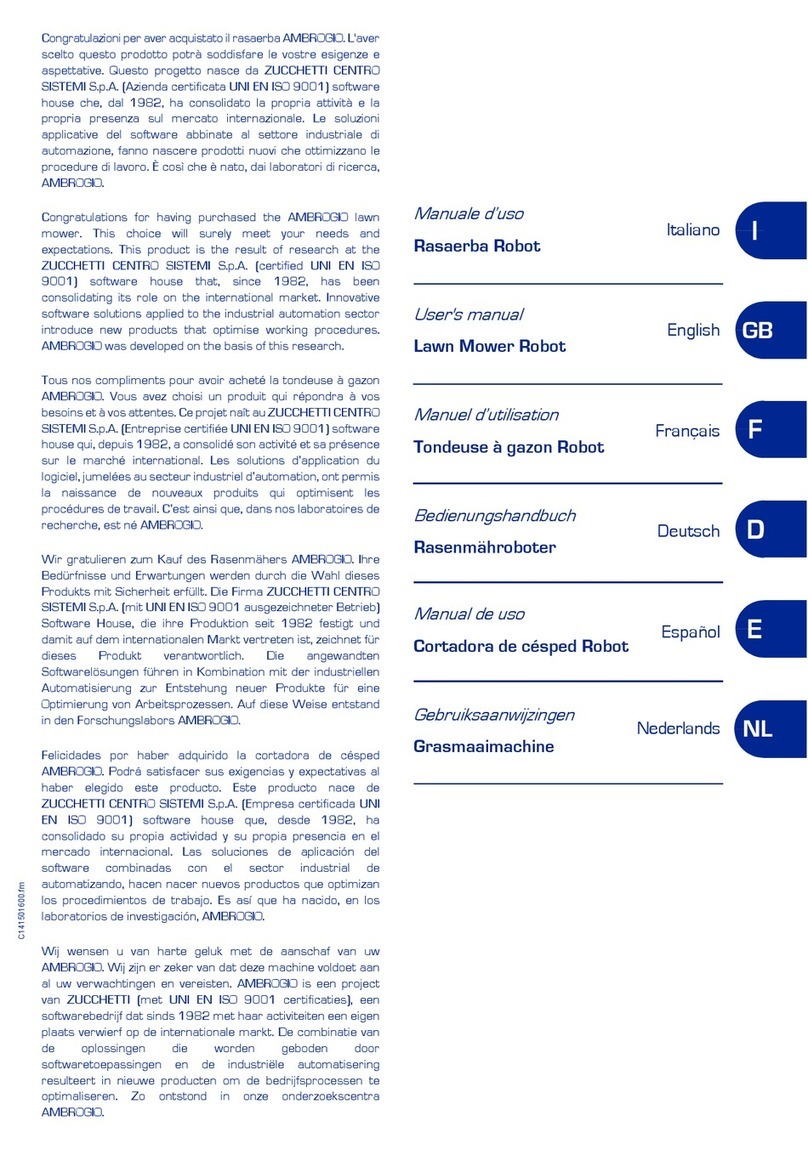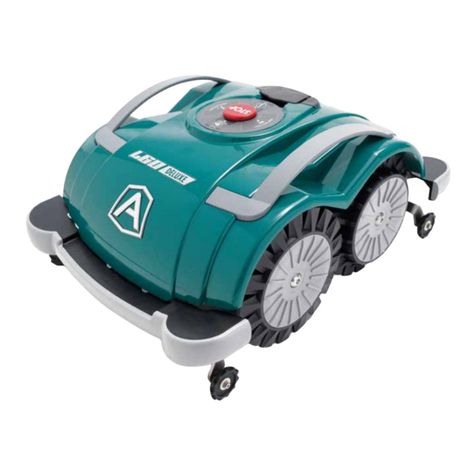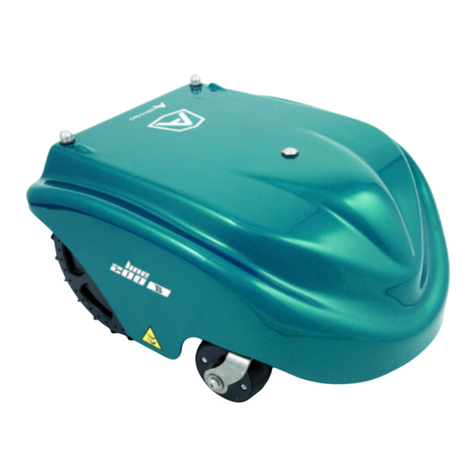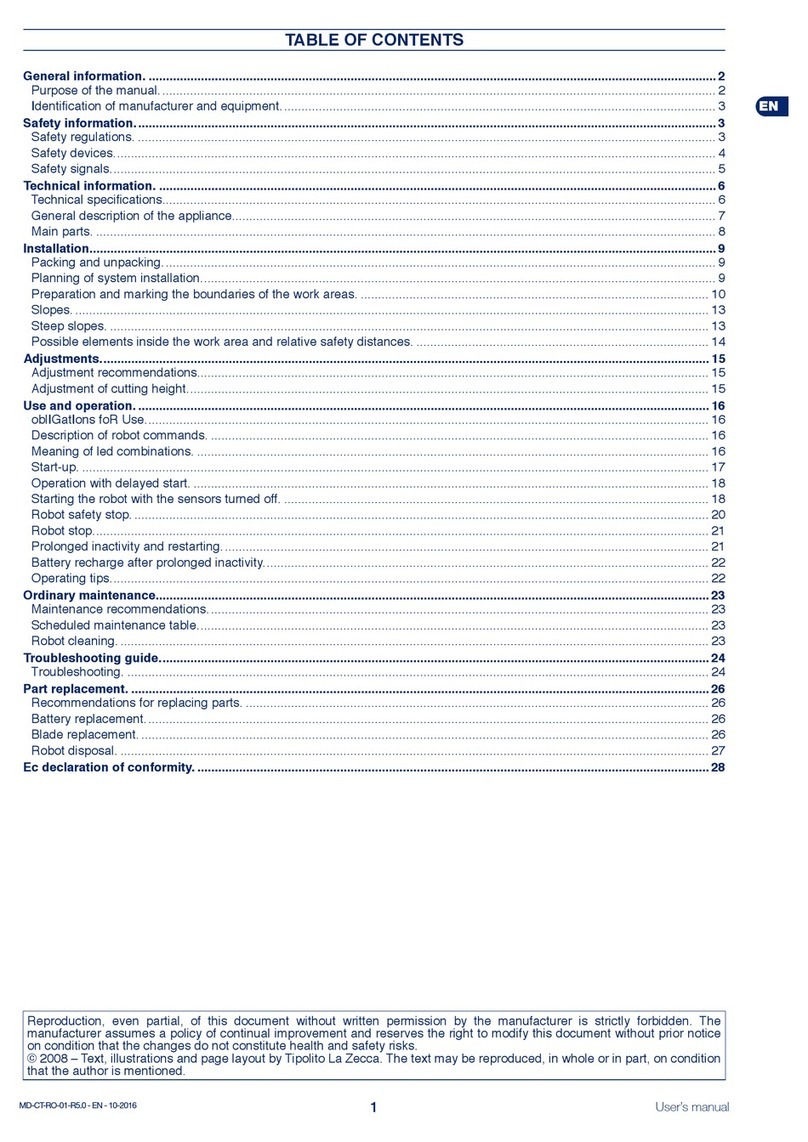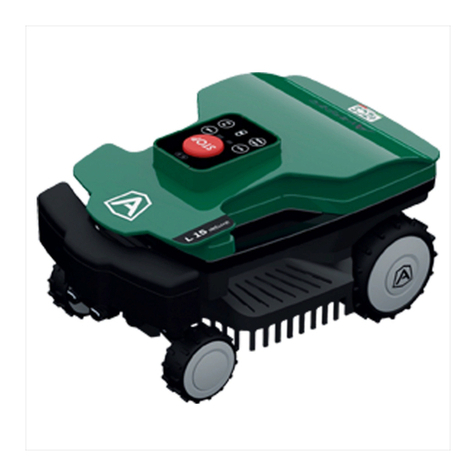
1User’s manual
EN
TABLE OF CONTENTS
General information. ................................................................................................................................................................... 2
Purpose of the manual................................................................................................................................................................ 2
Identication of manufacturer and equipment............................................................................................................................. 3
Safety information....................................................................................................................................................................... 3
Safety regulations. ...................................................................................................................................................................... 3
Safety devices............................................................................................................................................................................. 4
Safety signals.............................................................................................................................................................................. 5
Technical information. ................................................................................................................................................................ 6
Technical specications............................................................................................................................................................... 6
General description of the appliance........................................................................................................................................... 7
Main parts . ................................................................................................................................................................................. 8
Installation.................................................................................................................................................................................... 9
Packing and unpacking............................................................................................................................................................... 9
Planning of system installation.................................................................................................................................................... 9
Setting up of the perimeter wire. ................................................................................................................................................11
Re-entry method to the charging station....................................................................................................................................11
Setup of the robot’s quick re-entry to the charging station........................................................................................................ 12
Preparation and marking the boundaries of the work areas. .................................................................................................... 13
Installation of perimeter wire. .................................................................................................................................................... 17
Installation of the charging station and power supply unit......................................................................................................... 18
Adjustments............................................................................................................................................................................... 20
Adjustment recommendations................................................................................................................................................... 20
Adjustment of cutting height...................................................................................................................................................... 20
Use and operation. .................................................................................................................................................................... 21
Requirements for use................................................................................................................................................................ 21
Description of control panel and menu overview....................................................................................................................... 21
Initial setup................................................................................................................................................................................ 23
Menu access............................................................................................................................................................................. 23
Menu settings – programming mode......................................................................................................................................... 24
Initial start up – automatic mode. .............................................................................................................................................. 28
Robot safety stop. ..................................................................................................................................................................... 28
Use of the robot in closed areas with no charging station......................................................................................................... 29
Visualising the display during the work phase. ......................................................................................................................... 30
Prolonged inactivity and restarting............................................................................................................................................ 30
Battery charging after prolonged inactivity. ............................................................................................................................... 31
Operating tips............................................................................................................................................................................ 31
Routine maintenance. ............................................................................................................................................................... 32
Maintenance recommandations................................................................................................................................................ 32
Scheduled maintenance table................................................................................................................................................... 32
Robot cleaning. ......................................................................................................................................................................... 33
Troubleshooting. ....................................................................................................................................................................... 34
Troubleshooting guide.............................................................................................................................................................. 34
Part replacement. ...................................................................................................................................................................... 37
Recommendations for replacing parts. ..................................................................................................................................... 37
Battery replacement.................................................................................................................................................................. 37
Blade replacement. ................................................................................................................................................................... 37
Robot disposal. ......................................................................................................................................................................... 38
Ec declaration of conformity. ................................................................................................................................................... 39
Warranty rules. .......................................................................................................................................................................... 40
Conditions and limitations. ........................................................................................................................................................ 40
How to request warranty service............................................................................................................................................... 40
Additional denitions. ................................................................................................................................................................ 40
Reproduction, even partial, of this document without written permission by the manufacturer is strictly forbidden. The
manufacturer assumes a policy of continual improvement and reserves the right to modify this document without prior notice
on condition that the changes do not constitute health and safety risks.
© 2008 – Text, illustrations and page layout by Tipolito La Zecca. The text may be reproduced, in whole or in part, on condition
that the author is mentioned.
MD-CT-RO-14-R1.3 - EN - 10-2020
